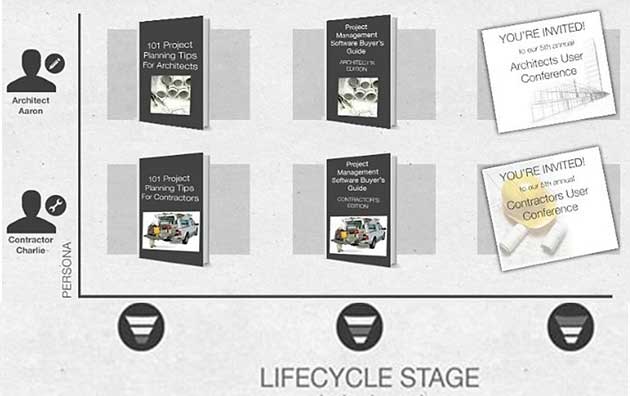I've sent you an email. Open it and I'll trigger another one. Jump through that email hoop, and I'll send you an offer for a free trial. Ignore that, but click on something else in the email, I'll automatically send you another series of emails. Sound like fun? Unless you love marketing emails, probably not...
If-then logic is one of the most powerful concepts in computer programming, and it's the foundation of most marketing automation software. But, sometimes, if-then branching logic can lead to a snarl of over-communication with only a loose relevance to the recipient's true interests and needs. Think about it: Does one click sum you up?

As marketers, we shouldn't rest on the laurels of automated email flows. Just because we can build a complex branch of if/then statements for every possible action doesn't mean it's the right thing to do, or that it's going to get us any closer to understanding our leads.
Instead, we ought to challenge ourselves to bring a customer-centric approach to marketing automation. Marketing automation should make our lead- and customer-related decisions easier, not more cluttered.
Understanding Customer Personas
Since a single click doesn't approximate a complete view into the interests and motivations of a given lead, let's start by focusing on what does.
In B2B marketing, a lead first becomes known to you usually by completing a form of some sort. It could be an inquiry form, a content download, or any similar opt-in. The information gleaned from that first conversion gives you a foundation on which to build an understanding of that lead's persona. Depending on your form fields, you'll know things like the lead's industry, company size, and role.
Even though a person's industry and role are central to their interests, that information alone doesn't make for a complete persona, nor does it tell you what content they'll find most useful. To get at that, you have to pair professional information with a running history of their interactions on your site and with your company.
I say a running history, because themes take time to emerge, and judging on single actions can be misleading. A true persona takes into account who a person is (e.g., a marketer at a midsize technology company) and what they express interest in (e.g., predominately reads materials on ROI measurement).
For any persona, you should be able to point to their needs, how they measure success, and what keeps them up at night, among other points.
Understanding the Customer Lifecycle
Understanding the buyer persona is good. Knowing where that persona is in his or her decision process is even better.
Even if you have a crystal clear understanding of your buyer personas, and relevant content for your campaigns, a customer-centric marketing automation strategy has to be agile enough to adapt to a person's needs over time.
In the following example, we've got two very clear personas: Architect Aaron and Contractor Charlie. Each is interested in different content; we've learned that through a combination of contact data, pageviews, and download behavior.
But note that as their decision process progresses, each moves onto different, more advanced content. Push the late-stage content in the beginning, and you'll come off as a spammer. Start with educational, informative content, and then move to more product/service-focused content when the lead is further down the sales funnel and ready to evaluate your company.

You should understand for each of your personas which actions indicate that a person has moved into a different stage of the decision process—what we at HubSpot call the "customer lifecycle."
What to look for—the indicators that a person has changed stages:
- A shift in content consumption: Maybe the lead started by reading your blog but has progressed to looking at your product and pricing pages.
- Contact made: A proactive call to your sales team or a demo request is a clear indicator that the person is ready to move forward.
- Ramped up activity: The visit patterns to a site increase and the lead has downloaded an increasing amount of content.
Bringing Persona and Lifecycle Stage together
Personas as well as lifecycle stages are important to a well-rounded and customer centric marketing automation strategy. Triggering off of individual actions alone disregards the bigger picture. For each marketing automation campaign, you need to know who you're communicating with, what's important to them, and where they are in their decision process.
Apply each of the following to automatically assign a persona and lifecycle stage for each contact, then use those overarching characteristics to fuel your marketing automation:
- Pageviews
- Forms completed
- Contact property or characteristic
- Miscellaneous actions
- List membership

Using More Than Just Email
Understanding personas and lifecycle stages will get you much closer to building a customer-centric marketing automation strategy.
In addition to thinking of the right message for the right person at the right time, don't forget to also think about the right medium. Too many marketing automation programs rely exclusively on email for their targeted communications. Email is a great channel, but it's just a fraction of the total experience that a lead or customer has with your company.
In addition to email, make sure your marketing automation helps you provide a more personalized experience throughout your communication channels:
- Website content: Use marketing automation workflows to dynamically change the images or call-to-action buttons on your website depending on who is looking at it.
- Offers: Use marketing automation to direct website visitors more quickly to content that meets their persona characteristics and reflects what they need at their individual lifecycle stage.
- Sales calls: Send your sales team notifications when a lead's actions indicate that he's moving to a new stage in his decision process. Make sure your sales team can see each lead's history of interactions with your company.
- Help desks: Webhooks enable some marketing automation systems to send notifications to different systems, such as your helpdesk software.
- SMS: In some cases, it might make sense to send personalized text messages and alerts via automation; just make sure that the service is something a customer has opted in to and finds useful.
- Social: Though it's not possible to send automated messages via social media, incorporating the social media activity of your leads and customers into your understanding of their interests and lifecycle stages can help your team market to them better.
A lead may not be opening your emails, but she might have clicked on six of your most recent social media shares. Without knowing that, and incorporating it into your data on the lead, you're missing some meaningful information.
Marketing automation should make potential customers' lives easier. It should remove irrelevant clutter and rise to meet the needs and answer the questions of a given email recipient, lead, or customer.
Branching logic enables you to do much in marketing automation, but don't forget the customer amid all of those capabilities.




